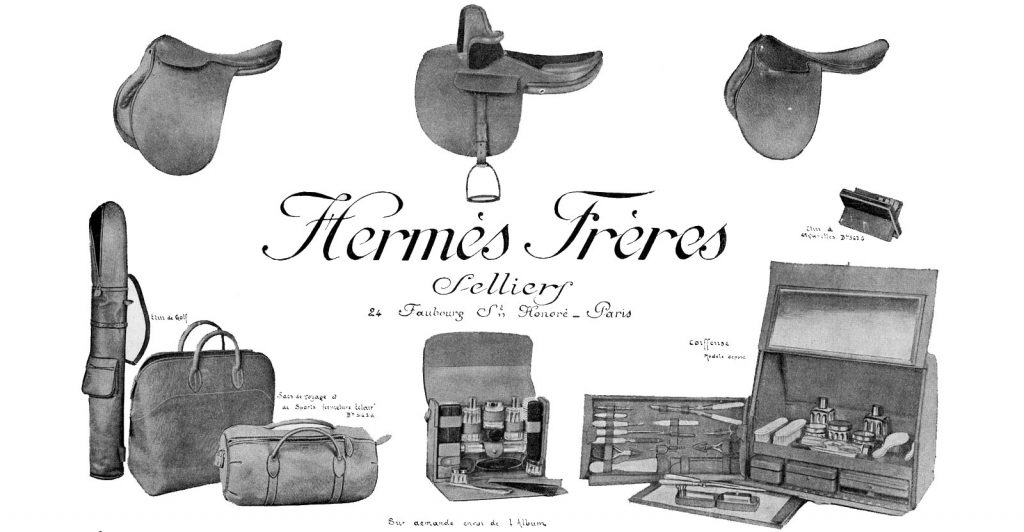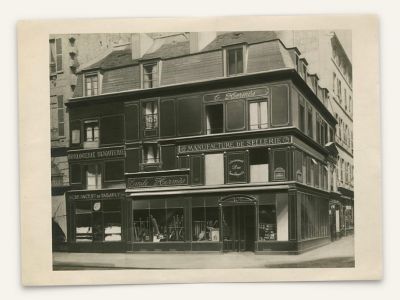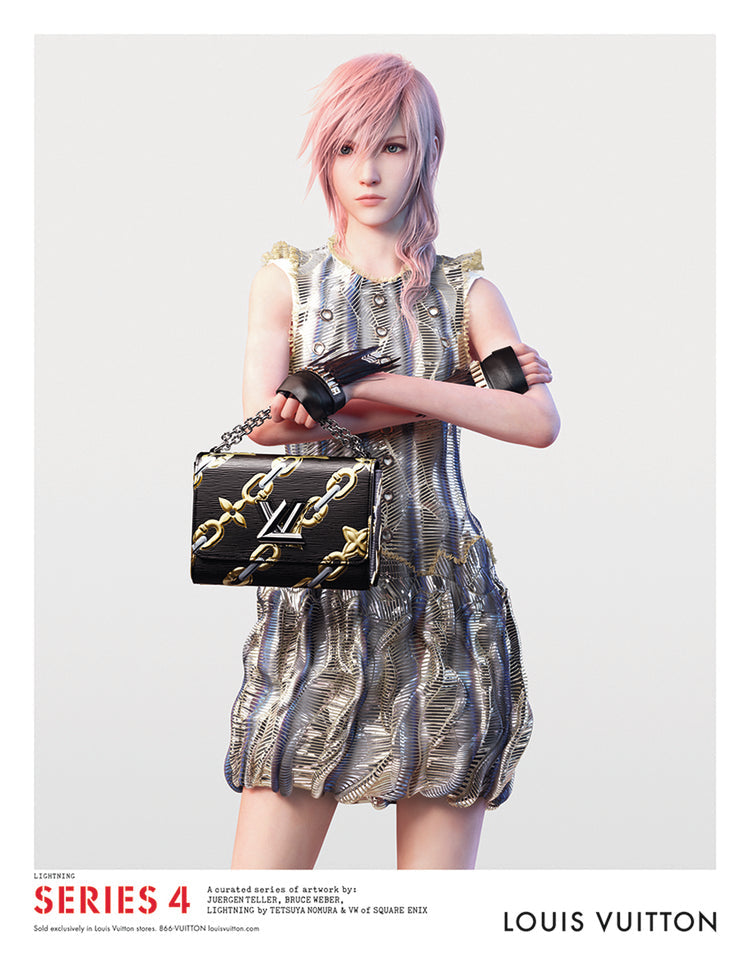Hermès is first and foremost a saddlery house founded in 1837 by Thierry Hermès. Trained in Normandy, Thierry created horse harnesses that were both robust and comfortable; he won a gold medal at the 1867 Universal Exposition, quickly attracting a wealthy clientele – among his clients was Tsar Nicholas II. In 1878 (the year of Thierry's death), the house again won a gold medal at the Paris Universal Exposition and gained worldwide renown, captivating the European aristocracy. 
Over time, his heirs expanded Hermès' expertise to saddlery, leather goods, and luggage at 24, rue du Faubourg-Saint-Honoré in Paris.
From the silk scarf to Cannes ties
Hermès quickly diversified its offerings. In 1937, the house launched its first silk carré – the famous printed scarf – designed by Robert Dumas, son-in-law of Émile Hermès.

In the same decade, Robert Dumas also designed the prototype of the future Kelly bag. As early as 1949, an unusual event illustrated Hermès' entrepreneurial spirit: male clients who were refused entry to a Cannes casino because they were not wearing ties then went to Hermès to buy some. The store manager, Bobby Breward, then suggested making ties, leading to the birth of a line of silk ties that would become an iconic accessory of the Hermès men's wardrobe.
The Kelly bag: from the workshop to the paparazzi flashes
One of the most famous examples of this mythology is found in the Kelly bag. Originally designed in the 1930s by Robert Dumas (husband of Émile Hermès' daughter), this discreet trapezoidal bag struggled to become known. Everything changed in 1956 when Grace Kelly, then Princess of Monaco, used this bag to hide her pregnant belly from photographers' lenses. A photo of her holding the bag over her belly made the cover of magazines worldwide. Hermès officially renamed the Sac à dépêches the "Kelly", and the bag instantly became a symbol of refinement and status.

Grace Kelly with her Hermès bag (1950s).

Even today, the rarest models (Himalaya croc, diamond-studded…) sell at auction for hundreds of thousands of euros.
The Birkin bag: the unlikely encounter mid-flight
The other myth culminates with the Birkin bag. In 1981 (and popularized in 1984), actress-musician Jane Birkin was seated next to Jean-Louis Dumas on a Paris-London flight. When Jane Birkin suddenly spilled the contents of her straw bag into the aisle, Jean-Louis Dumas started a conversation about the "perfect bag." He then sketched what would become the Birkin on the first paper he found – an airsickness bag! The model was launched in 1984, made of soft leather, spacious, and elegantly finished. The Birkin quickly achieved iconic status. Each piece is entirely handcrafted by a single artisan, requiring several dozen hours of work, making the supply very limited (estimated around 200,000 Birkins in circulation worldwide). Waiting lists stretch for years, and many stars (Victoria Beckham, Kim Kardashian, etc.) accumulate hundreds of different Birkins.

Jane Birkin and Serge Gainsbourg (1968) – Jane Birkin inspired the famous Hermès "Birkin bag."
Other treasures of the house
Besides the Kelly and the Birkin, Hermès has created other pieces that have become legendary thanks to equally astonishing stories: for example, the Constance bag (with its "H" clasp) was designed in 1959 by Catherine Chaillet. Legend has it that she named the bag after her own daughter, born Constance on the very day of its launch.


This bag was highly prized by Jacqueline Kennedy and remains highly sought after by collectors. Hermès also invented jewelry and accessories inspired by the sea (the Chaîne d’ancre bracelet invented by Dumas is directly inspired by boat moorings). More recently, the brand perpetuates the myth with limited editions, exclusive colors, and bespoke orders that maintain its aura of extreme rarity.
Each anecdote has contributed to building the Hermès legend: from the small Parisian harness workshop to royal and celebrity reports, these authentic stories (verified by multiple sources) highlight the culture of detail and exception that characterizes the house. Hermès thus remains synonymous with timeless elegance, supported by iconic products that have become cult favorites. The Hermès bags, in particular, embody this dual heritage – artisanal and glamorous – that captivates enthusiasts worldwide.
Sources: Official Hermès biography and timeline, press articles and archives (Condé Nast Traveler, Forbes).






